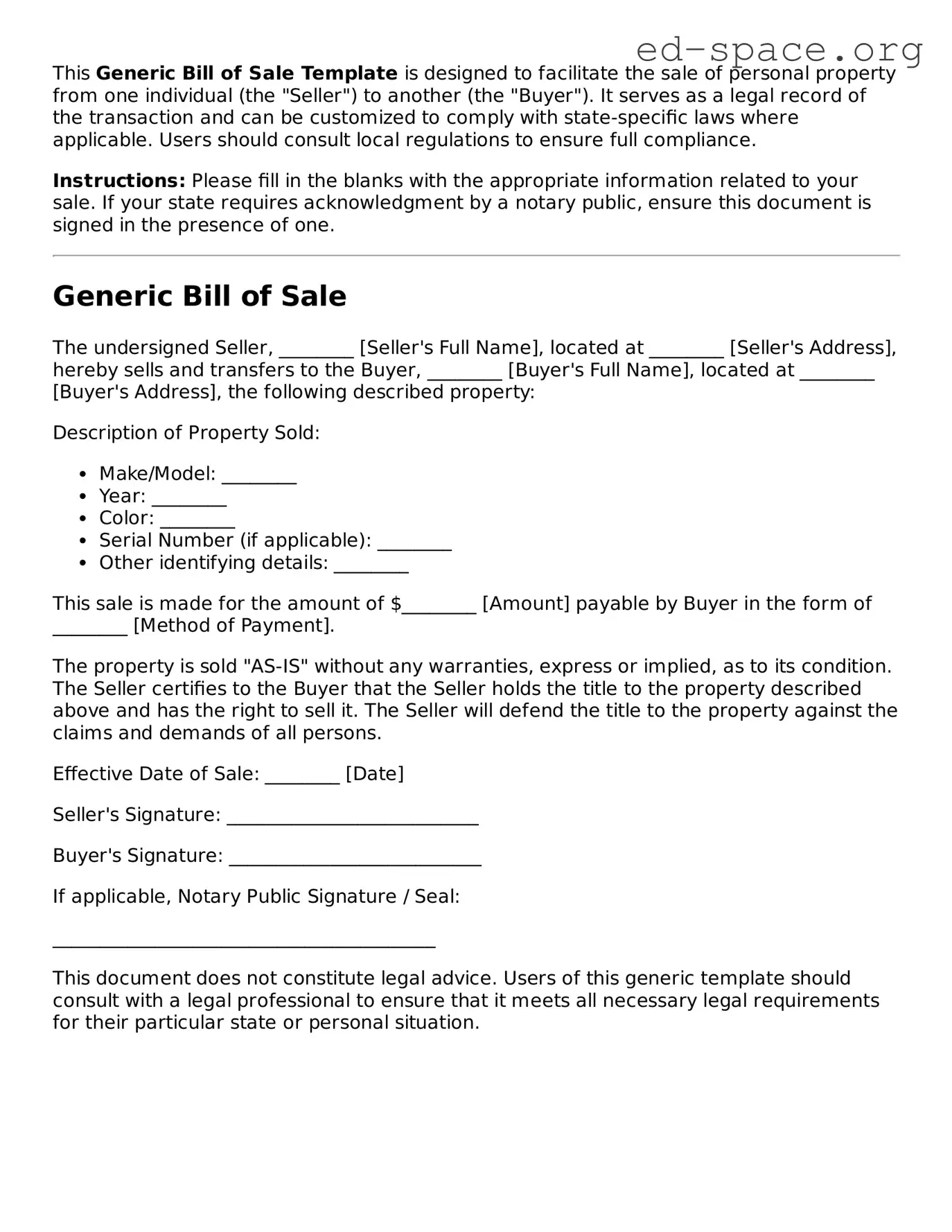What is a Bill of Sale?
A Bill of Sale is a legal document that records the transfer of ownership from one party to another in exchange for payment. It typically includes details of the transaction such as the date, description of the item sold, purchase price, and the names and signatures of both the seller and the buyer.
Why do I need a Bill of Sale?
A Bill of Sale serves as proof of purchase and documents the sale of an item. It protects both the buyer and the seller by detailing the specific terms and conditions of the transaction, helping to resolve any future disputes. It is also used for tax and legal purposes and may be required to register or insure the item purchased.
Is a Bill of Sale legally required?
The requirement for a Bill of Sale varies depending on the jurisdiction and the type of item being sold. While not always legally required, it is highly recommended to have one for significant transactions, such as the sale of vehicles, boats, or large personal property, as it provides a record of the sale and can be used for legal protection.
What information should be included in a Bill of Sale?
A comprehensive Bill of Sale should include the full names and addresses of both the buyer and the seller, a detailed description of the item being sold (including make, model, year, and serial number, where applicable), the sale date, the sale price, payment terms, and any other conditions of the sale. It should also include the signatures of both parties involved.
Can a Bill of Sale be handwritten?
Yes, a Bill of Sale can be handwritten, as long as it includes all necessary information and is legible. However, using a typed or digitally formatted document is preferable for clarity and permanence. Both parties should have a copy of the signed document.
Do both the buyer and the seller need a copy of the Bill of Sale?
Yes, both the buyer and the seller should retain a copy of the Bill of Sale. This document serves as a receipt for the buyer and as a record of the sale for the seller. Having a copy ensures that both parties can verify the details of the transaction in the future if needed.
Can a Bill of Sale be used for any type of item?
A Bill of Sale can be used for the sale of almost any type of personal property - from vehicles and boats to jewelry and electronics. However, the specific requirements and legal standing of a Bill of Sale may vary depending on the type of item and the jurisdiction in which the sale takes place.
What happens if I lose my Bill of Sale?
If you lose your Bill of Sale, it is recommended to contact the other party involved in the transaction and request a copy. If it was filed with any governmental agency as part of the registration process for the item sold, you might also obtain a copy from that agency. It’s crucial to keep this document safe as it is an important record of the sale.
Is a Bill of Sale the same as a title?
No, a Bill of Sale is not the same as a title. A title is a legal document that establishes a person's legal ownership of the item, while a Bill of Sale only documents the transaction and transfer of ownership. Depending on the item being sold, a title may be required to legally transfer ownership in addition to the Bill of Sale.
